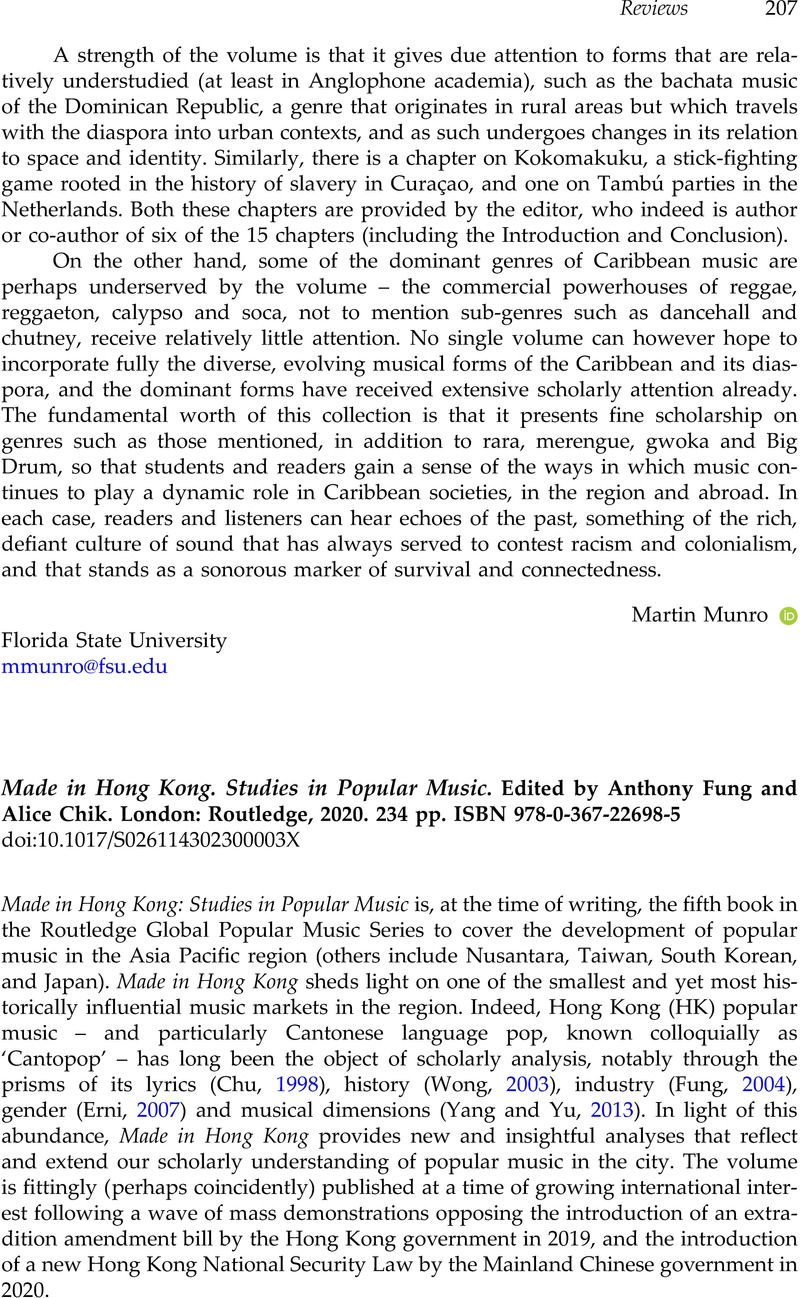Wong, J. (黃湛森)
2003. ‘Yueyu liuxingqu de fazhan yu xingshuai: xianggang liuxing yinjue yanjiu 1949– 1997 粵語流行曲的發展與興衰:香港流行音樂研究 1949– 1997’ [The Rise and Fall of Cantopop: A Study of Hong Kong Popular Music 1949– 1997]. PhD dissertation, The University of Hong Kong
Google Scholar 